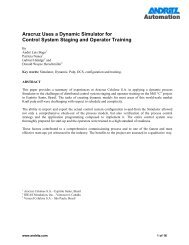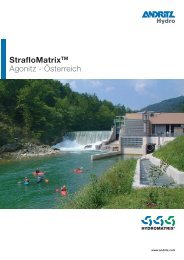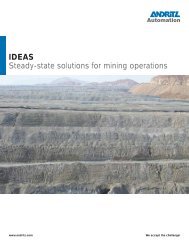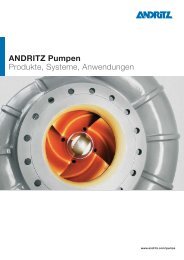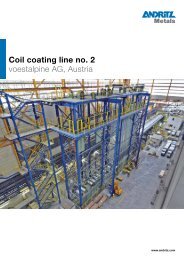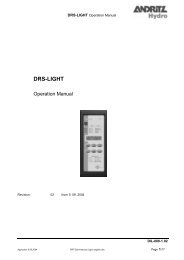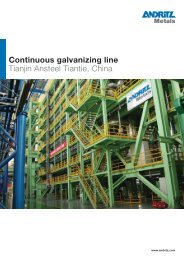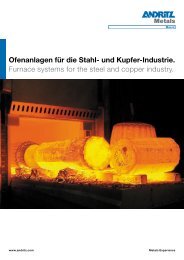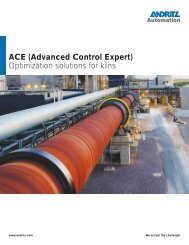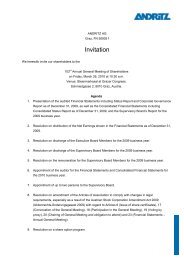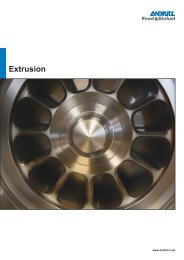Reference Description Alunorte - Andritz
Reference Description Alunorte - Andritz
Reference Description Alunorte - Andritz
You also want an ePaper? Increase the reach of your titles
YUMPU automatically turns print PDFs into web optimized ePapers that Google loves.
Abstract<br />
At Barcarena in northern Brasil, <strong>Alunorte</strong> has commenced processing of bauxite from the newly developed<br />
Paragominas mine. The challenge was to transport the bauxite over a distance of 260 km to the existing<br />
alumina refinery in Barcarena. Several options for transportation were studied. This resulted in <strong>Alunorte</strong>’s<br />
decision as the first company in the world to grind the bauxite, mix it with water and transport the suspension<br />
containing approx. 50% bauxite in a pipeline to the refinery. The next problem to be solved was to dewater<br />
the very fine bauxite to the low residual moisture content required by the existing refinery using the Bayer<br />
Process. Several options were investigated, the most promising being filter presses and hyperbaric disc<br />
filters. The decision was made in favourof the hyperbaric disc filter due to the continuous operation and lower<br />
investment costs. This resulted in the largest installation of hyperbaric filters in the world with a total filtration<br />
area of 840 m². This paper gives an overview of the whole investment project starting from the equipment<br />
selection process, the basic design of the plant, installation and start-up at the beginning of 2007.<br />
Introduction<br />
<strong>Alunorte</strong> is one of the world leading alumina refineries, located in Barcarena, north of Brasil. For its<br />
“expansion2” it processes bauxite from the newly developed Paragominas mine, which is located 260 km<br />
away. The area between the mine and the refinery lacks adequate infrastructure for transporting large<br />
quantities of ore.<br />
The technique of transporting minerals or ores in a pipeline is not generally a new technology. Pipelines for<br />
copper or other kind of ores can be found in several locations from Chile to China. Although the technique is<br />
not new it has never been applied for bauxite over such a long distance of more than 200 km.<br />
A railway line is well proven fortransporting ores, but the investment costs per km are 4 to 6 times higher<br />
than for a pipeline. Also with regard to operation and maintenance costs, the railway system is far more<br />
expensive. In addition the impact of a pipeline on the environment is much lower.<br />
<strong>Alunorte</strong> studied several options. The final decision was made to grind the bauxite, mix it with water and<br />
transport the suspension containing approximately 50% bauxite in a pipeline to the refinery, being the first<br />
alumina refinery in the world to use this kind of transport solution. For this challenging task the bauxite must<br />
be ground to a specific grain size. Flow velocity, pipeline design and slurry concentration require a specific<br />
range of bauxite grain size.<br />
The next problem to be solved was how to dewater this very fine bauxite suspension from a moisture content<br />
of 50 % to the water content acceptable for the Bayer process i.e. 12 to 15%. Several options were<br />
investigated. The most promising ones were filter presses and hyperbaric disc filters.<br />
ANDRITZ AG<br />
Separation Technologies<br />
Stattegger Strasse 18, 8045 Graz, Austria<br />
Tel.: +43 (316) 6902 2318, Fax: +43 (316) 6902 463<br />
separation@andritz.com, www.andritz.com<br />
Page 2 of 9



